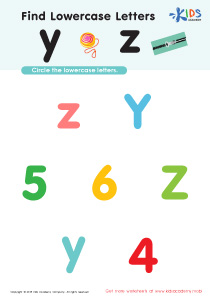Letter recognition Normal Uppercase Letters Worksheets for Ages 3-6
11 filtered results
-
From - To
Unlock the joy of learning with our "Letter Recognition Normal Uppercase Letters Worksheets," ideal for children aged 3-6! These engaging worksheets are designed to help young learners recognize and identify uppercase letters through fun activities and exercises. By enhancing their letter recognition skills, children build a strong foundation for reading and writing. Each worksheet is crafted to captivate and challenge preschoolers and kindergarteners, making learning an enjoyable experience. With vibrant visuals and simple instructions, these resources make the educational journey exciting and effective. Perfect for parents and educators aiming to spark early literacy skills in their little learners!
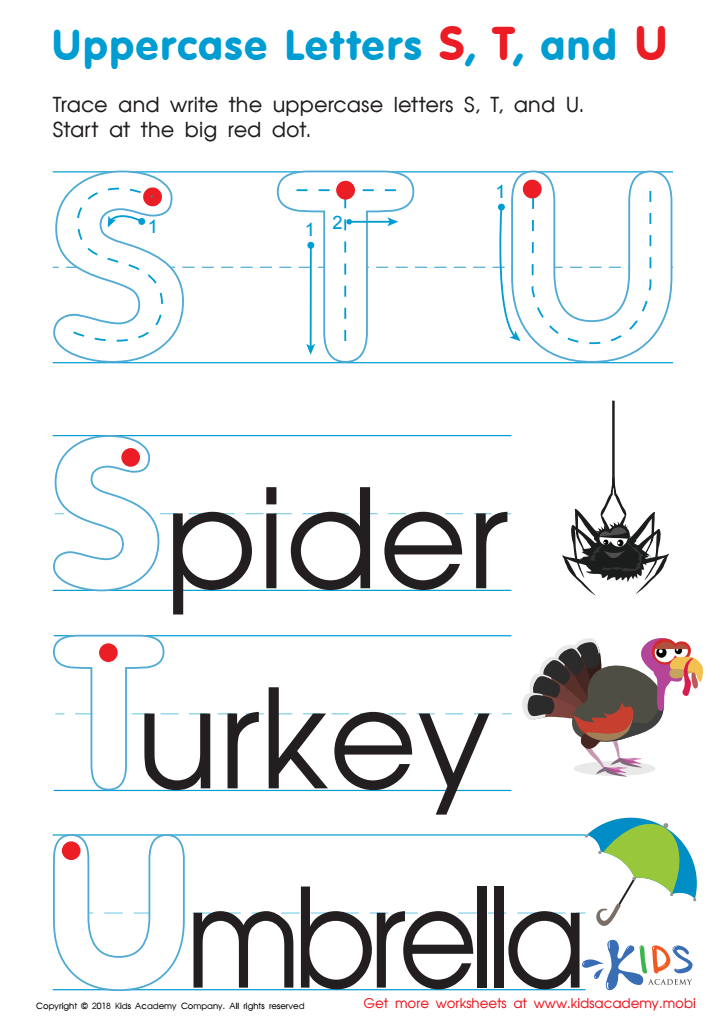

Uppercase Letters S, T, and U Worksheet
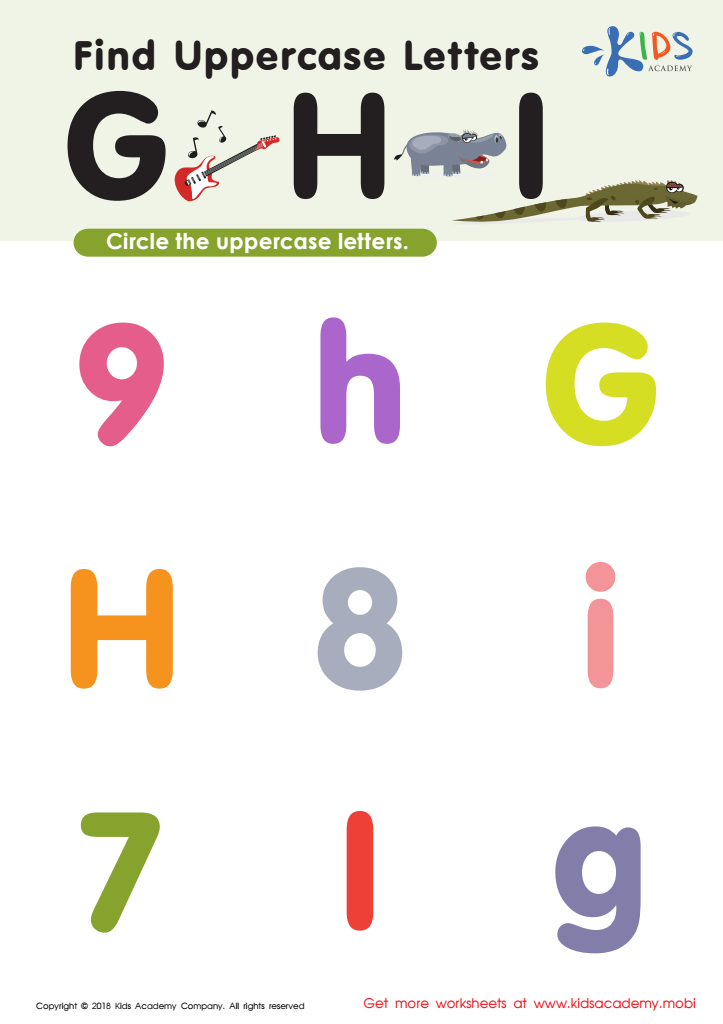

Find Uppercase Letters G, H, and I Worksheet


Uppercase Letters Maze Worksheet


Find Uppercase Letters Worksheet


Find Uppercase Letters J, K, and L Worksheet
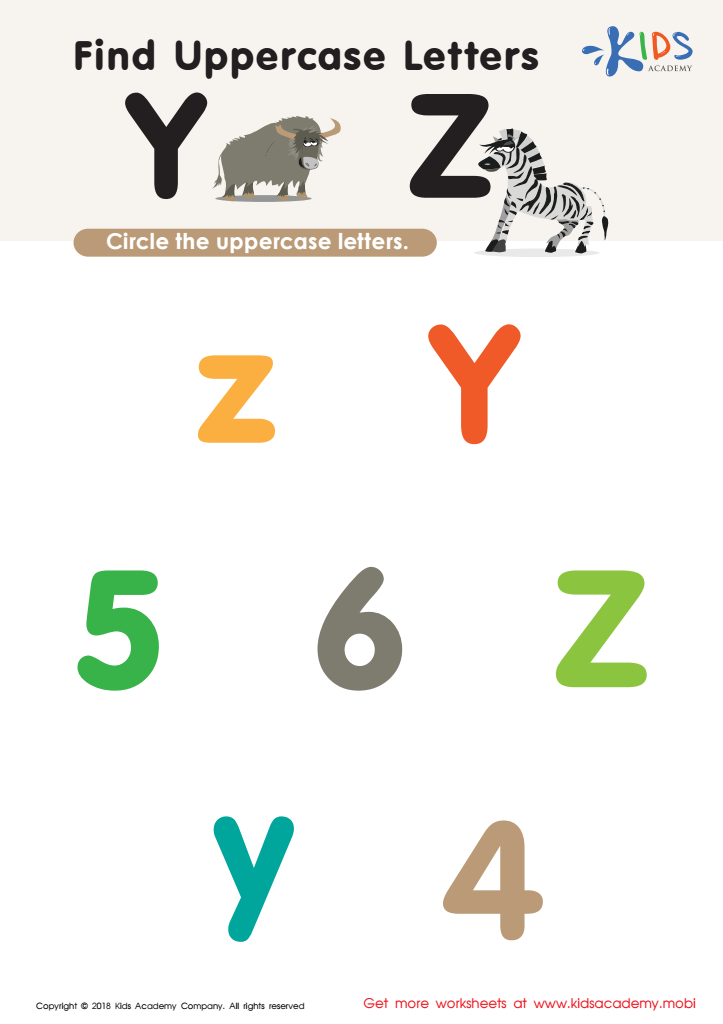

Find Uppercase Letters Y Z Worksheet
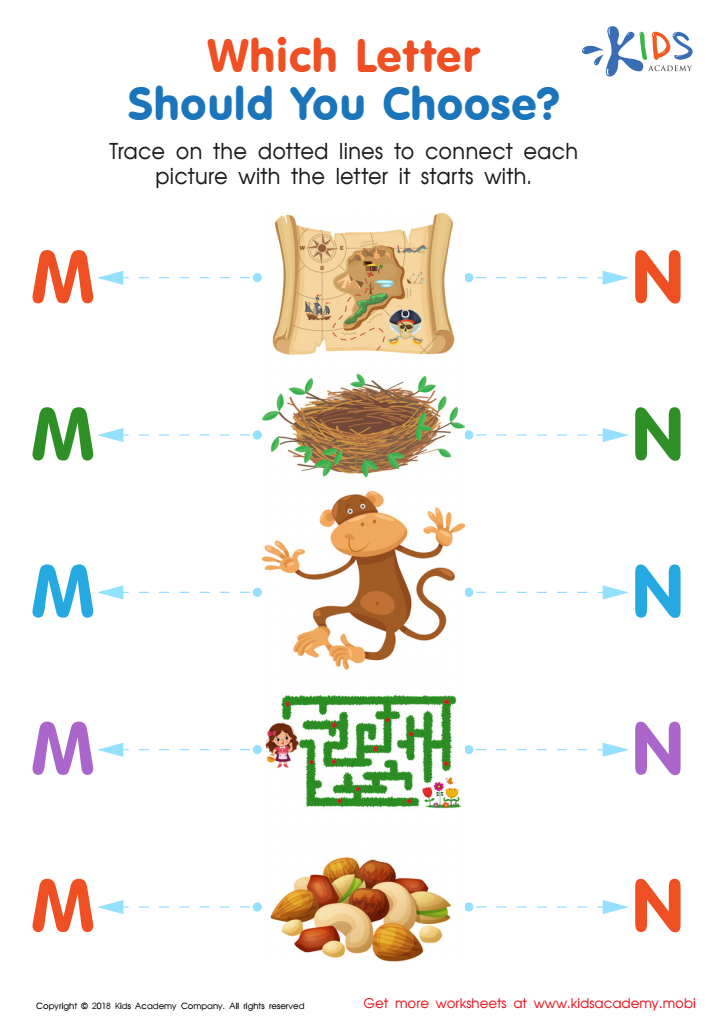

Which Letter Should you Choose? Worksheet


Find Uppercase Letters A, B, and C Worksheet


Find Uppercase Letters V, W, X Worksheet
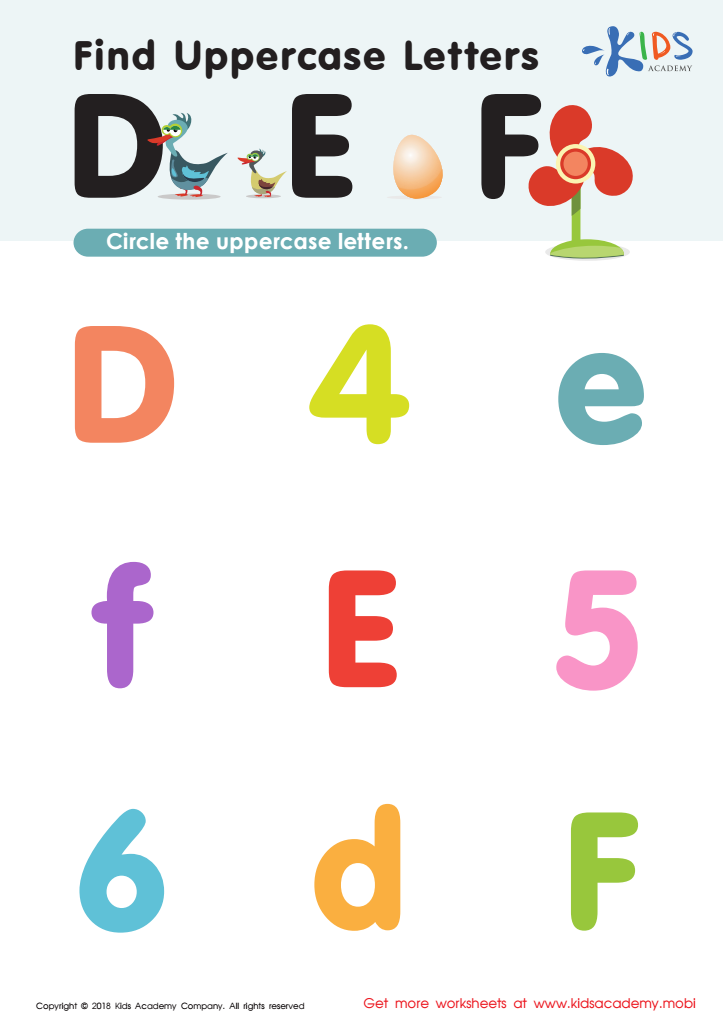

Find Uppercase Letters D, E, and F Worksheet
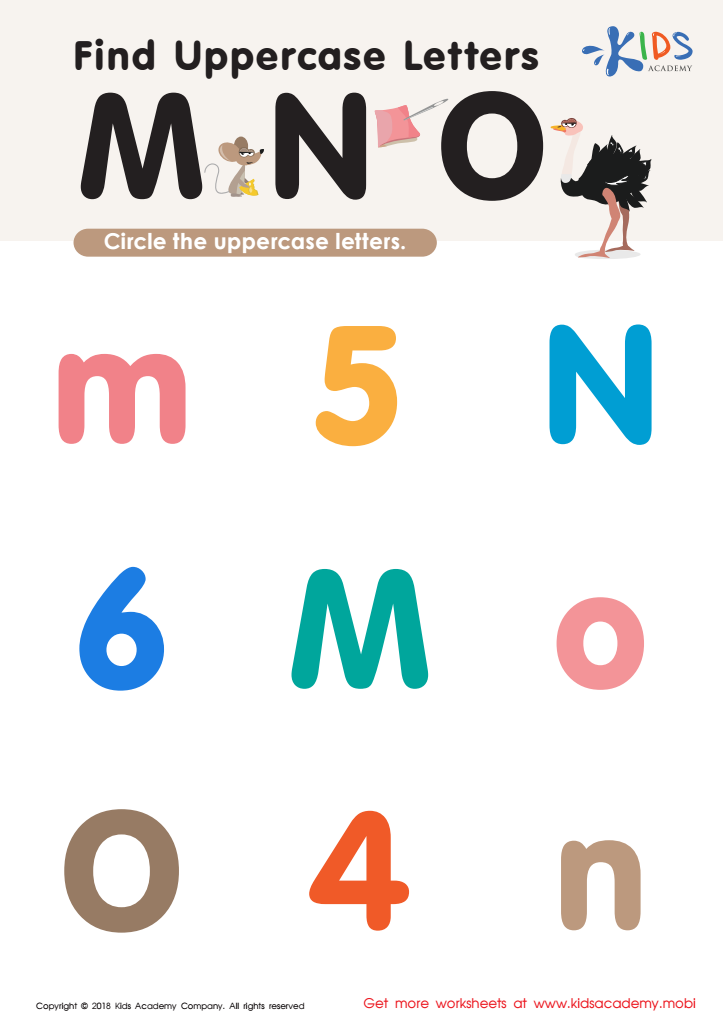

Find Uppercase Letters M, N, and O Worksheet
Letter recognition, especially of uppercase letters, is a foundational skill for children aged 3-6 that plays a critical role in their early literacy development. This stage in childhood is crucial as the brain is exceptionally receptive to learning new skills, including the alphabet. Familiarizing young children with uppercase letters helps in building a solid foundation for reading and writing. Uppercase letters are generally visually simpler and more uniform, making them easier for young children to identify and memorize.
By recognizing uppercase letters, children can begin to associate letters with sounds, a fundamental step toward phonemic awareness. This, in turn, aids in developing early reading skills, such as word recognition and basic spelling. Furthermore, early letter recognition is closely linked to future academic success. Children who can easily identify letters are more likely to excel in areas such as vocabulary, comprehension, and overall literacy.
For parents and teachers, facilitating letter recognition can be integrated into fun activities such as alphabet games, crafts, and reading aloud. These engaging methods make learning enjoyable, further embedding alphabet knowledge and fostering a lifelong love of learning. Ignoring this key developmental milestone can set back a child's educational trajectory, making early intervention both important and beneficial.
 Assign to My Students
Assign to My Students









